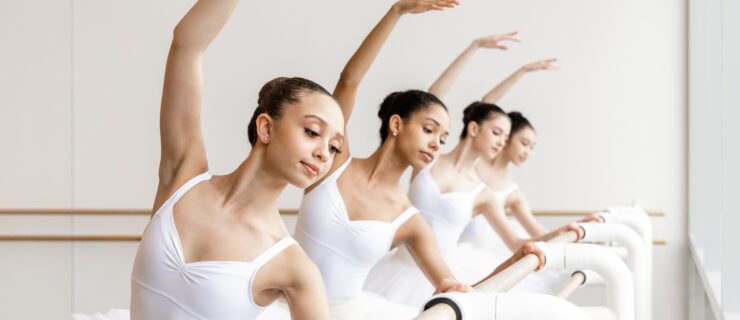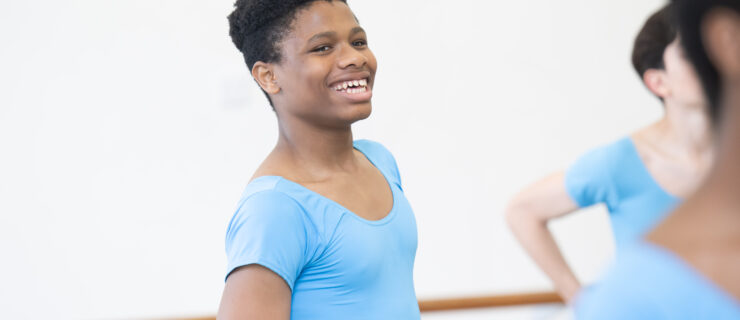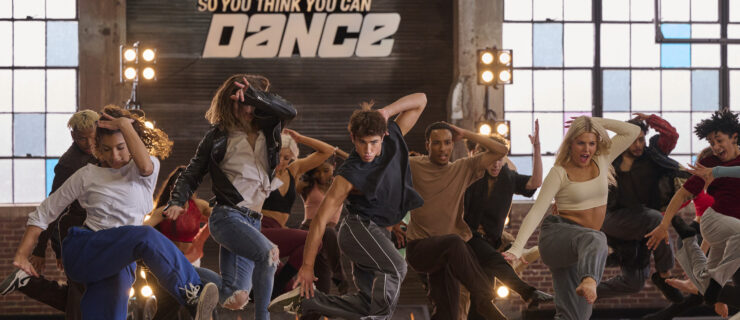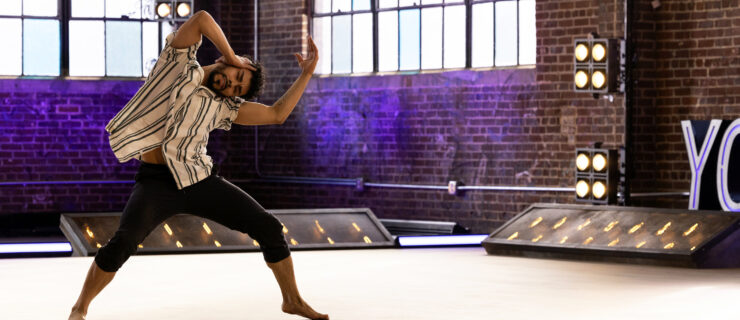The In-Betweens

Why is Oregon Ballet Theatre principal Alison Roper’s grand jeté so beautiful? Because the glissade that preceded it was perfect. (photo by Blaine Truitt Covert)
Every dancer dreams about exploding into a huge saut de chat or gliding through a buttery-smooth pirouette. Those big moments can look and feel glorious—but they don’t come out of nowhere. Sometimes, when hoping to whip out more turns or get more hang time in a leap, dancers forget about the preparatory steps that set up the flashier ones.
“Transition steps need to be practiced and perfected as much as any other step,” says Oregon Ballet Theatre principal Alison Roper. “A well-executed transition will make you look like a better dancer. A sloppy preparation will make you look like a novice.” But how can you maximize the power of those little in-between steps?
Go Back to Basics
The keys to a solid preparation step are actually the basics of good technique: pulled-up knees, fully pointed feet, strong turnout, clean positions and a juicy plié. But it’s easy to forget all of that when your mind’s on the complicated trick ahead. One of the best ways to make sure your preparations are clean and polished is to pay extra attention to the basic elements you practice at the barre every day—particularly plié, tendu, relevé and rond de jambe. They’re the building blocks of in-betweens like glissades, pas de bourrées, pas de basques, faillis and pirouette preparations.
At Central Pennsylvania Youth Ballet, Marcia Dale Weary and Melinda Howe teach that a well-executed transition step will actually improve the bigger step to come. “I call them ‘helper steps,’ ” says Howe. “The students learn that if you’re doing tombé pas de bourrée, fourth, pirouette, making sure the fourth position is really turned out will help you do a better turn.” Why? Because taking off from a strongly held turned-out fourth position ensures your stomach and back muscles are engaged, which will also improve your balance in the turn.
Dale Weary is especially painstaking when teaching glissades, since they’re one of the most common preparation steps. She breaks them down piece by piece: “I go very slowly at first, so that later when students have to move quickly it’s still clean,” she says. “I show them each ‘picture’ of the step: the plié, the stretching out of the legs with straight knees and pointed toes, and then the closure in a perfect fifth.”

As Boston Ballet principal Jeffrey Cirio knows, the better the preparation, the higher the jump. (photo by Gene Schiavone)
Coordination Is Key
Boston Ballet principal Jeffrey Cirio says his biggest preparation problem has been mastering the timing of clean, smooth transitions—which makes the “power” steps look even better.
“What I’ve had to think about is making sure everything is fluid,” Cirio says. “For example, when doing a failli, glissade, double cabriole combination, I’m focusing on coordinating everything right before the jump”—which means bringing his legs and arms together simultaneously at the end of the glissade. That allows him to use both legs to push off for the cabriole, improving his ballon. It also requires bringing the second leg in quickly to meet the first, which keeps the glissade from feeling jerky. “If you can’t make your dancing smooth, the turns and jumps don’t mean anything,” Cirio says.

Roper’s saut de chat is lovely—but if the glissade before your leap also looks like this, you’re doing it wrong. (photo by Andy Batt)
Size Matters
If your preparation is too large, the big step you’re leading up to will look less impressive. Many dancers have trouble differentiating the glissade that precedes a saut de chat or grand jeté from the large leap itself. If your technique is sufficiently advanced (ask your teacher for his or her opinion), try substituting a pas de bourrée couru (“running” pas de bourrée) for a glissade. The series of tiny steps will make the larger jump more striking. Be sure to keep your feet close together during the runs and to push your heels forward as you launch into your leap.
Another common pitfall? The big “windup” before a pirouette, which can end up detracting from the turn itself—and almost always takes up more time than the music naturally allows. Think about keeping your shoulders over your hips in fourth position, and not letting either leg (front or back!) turn in before you relevé. Connect your preparation to the pirouette by using what Howe calls an “active plié”: Rather than bouncing down into and then up out of it, think of your knees like coiled springs. That will prevent you from “hiccupping” before the turn.
Remember that every step should read clearly from the audience, not just the flashiest ones. “Without adjectives and adverbs,” Roper says, “our writing would be unclear. It’s the same with ballet. Transition steps make ballet’s sentences complete.”



